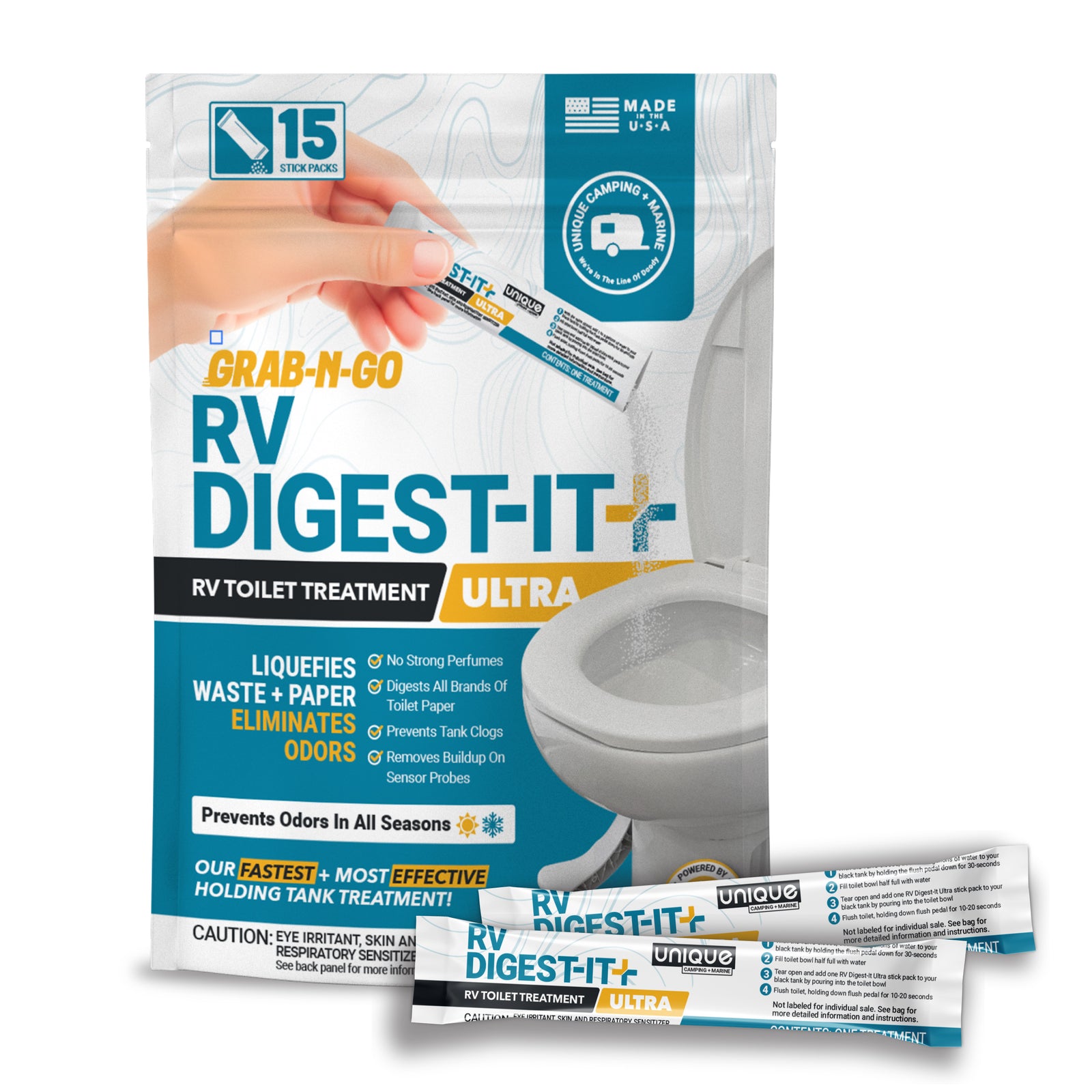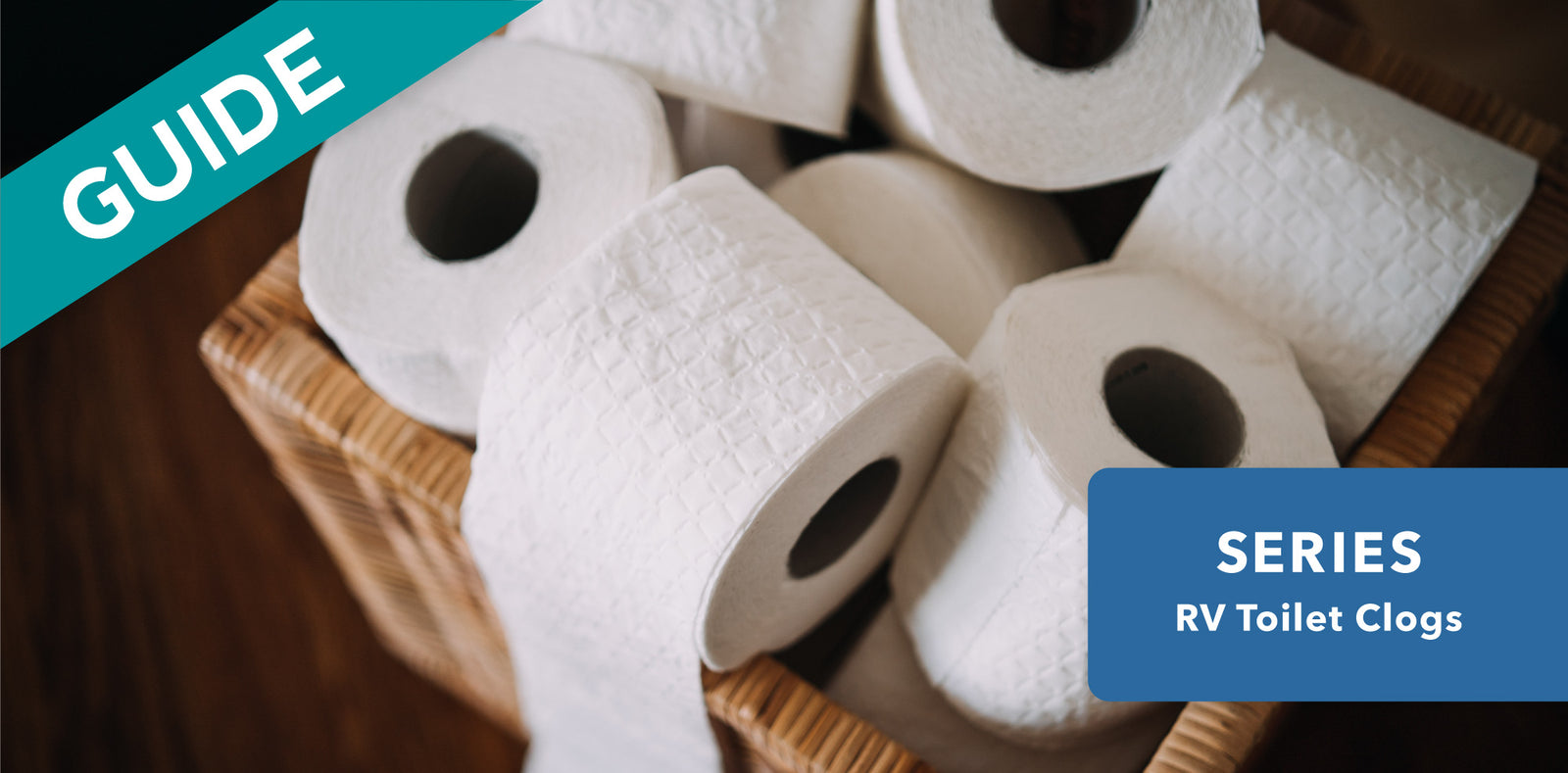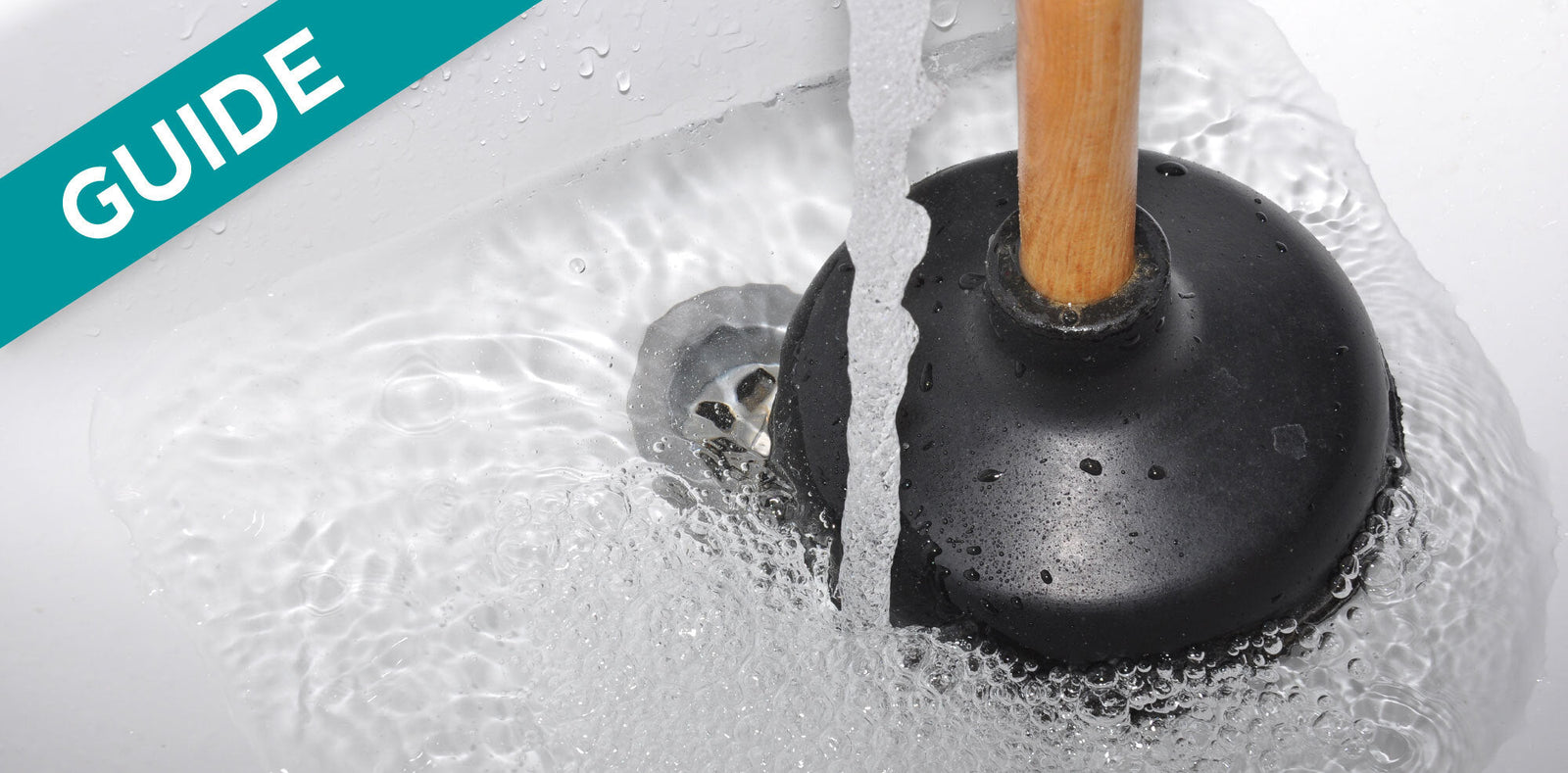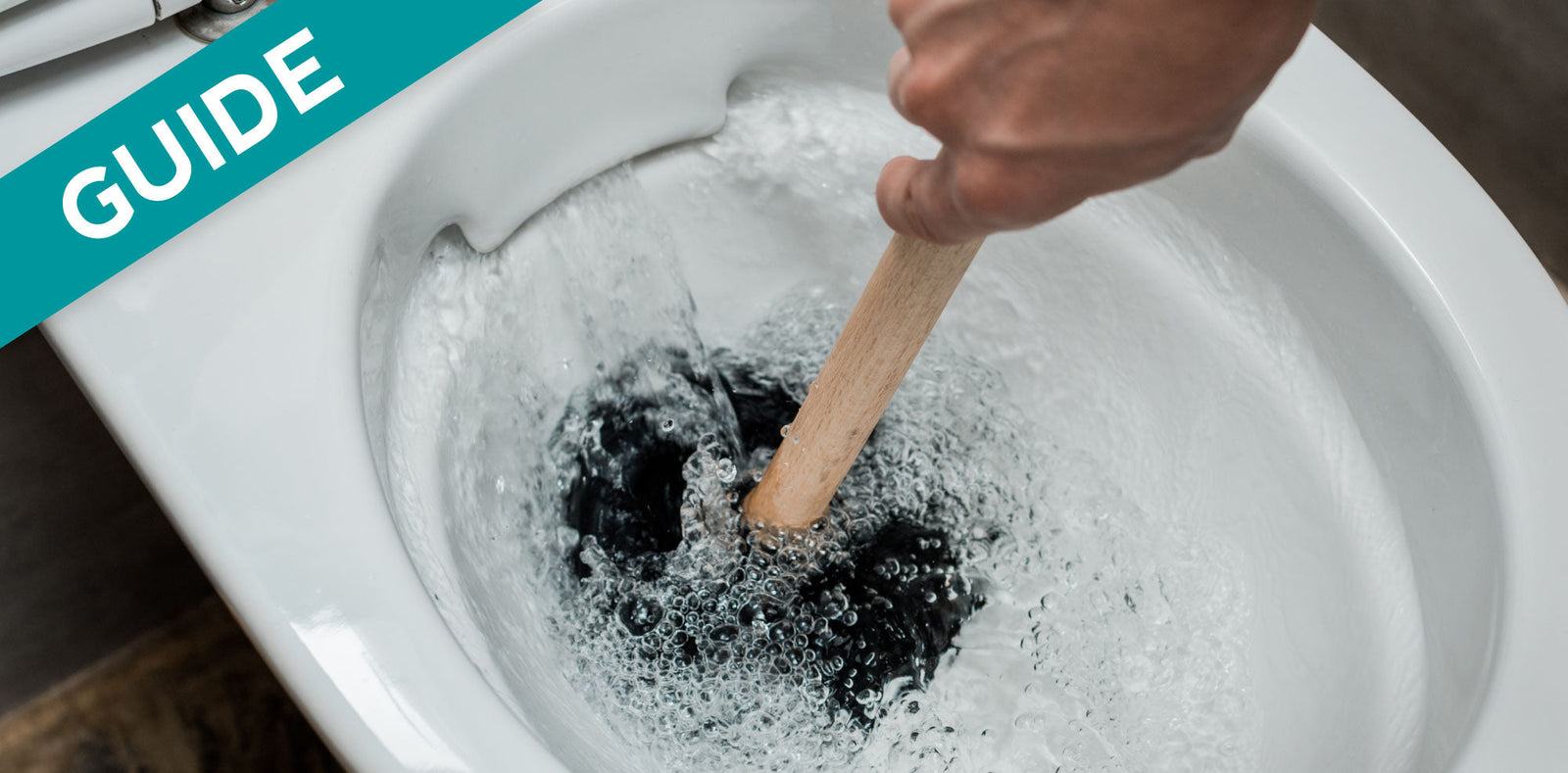
While you may already be well-versed about clogs in RV plumbing systems, you may be less familiar with RV ventilation clogs. The most important thing to understand is that without proper RV holding tank ventilation, you may experience problems when trying to dump your RV holding tanks — putting a damper on your next camping experience.
Key Points About RV Vent Clogs
- RV holding tanks need proper ventilation in order to function properly.
- There are three main areas where RV ventilation clogs can occur: freshwater holding tanks, gray water holding tanks, and black water holding tanks.
- RV ventilation clogs can be caused by bird, insect, and rodent nests, seasonal debris, mechanical failures, over-filled tanks, and vent-tube blockages.
- Clearing RV ventilation clogs is relatively easy, and usually involves manually removing the blockage to allow proper airflow.
Why Do RV Holding Tanks Need Ventilation?
Ventilation is important in RV holding tanks because it allows air and gas that would normally be trapped in the tanks and plumbing systems to flow out appropriately. When there are clogs and blockages in the RV vents, it can prevent you from being able to dump tanks effectively and can also push foul odors into your RV.
Why? Well, imagine pouring liquid out of a can — to prevent the liquid from “glugging” or “burping” it is better to poke a hole in the back of the can to allow air to flow through and reduce the vacuum inside. The same is true in your RV holding tanks, meaning that proper ventilation provides you with a smoother dumping experience.
Types of RV Vent Clogs
There are three main areas where you can experience clogs in RV vents, the freshwater holding tank, gray water holding tank, and black water holding tank. Let’s look at the details of each of these RV vent clogs to help you understand how they occur.
1. RV Vent Clog: Freshwater Tank
In RV freshwater holding tanks there is a pump that moves water from the tank to the various fixtures in the RV including sinks, showers, and toilets. As the pump runs, it lowers the water level inside of the tank.
If there is no vent, or the vent becomes clogged, the RV freshwater tank can contract until it no longer allows water to flow out of the tank through the pump. This is called “air lock”, where gas and vapour, being less dense than the liquid, rises to the highest point in the tank and prevents liquid flow. To put it another way, think of drinking a beverage with a straw when there is no additional opening in the container to allow air in. If you draw through the straw with enough effort, the cup will begin to collapse, or in the case of a sturdy cup, the liquid will no longer be able to leave the container at all.
In the case of your RV, proper ventilation is the way to allow liquid to easily flow to and from your freshwater holding tank and prevent this issue from occurring.
If you suspect that you have a clog in your RV freshwater vent, some key indicators include:
- If you hear the pump running and know there is water in the RV freshwater tank, but little to no water is coming out of the fixtures.
- When you add water to the RV freshwater tank, the water sputters back out as you attempt to fill it.
If you are experiencing one, or both, of these issues, you may have a clog in your RV freshwater vent.
2. RV Vent Clog: Gray Water Tank
RV gray water holding tanks are gravity fed from sinks, showers, and dishwashers in your RV. If the gray water holding tank vent becomes blocked, air is forced back up toward the fixtures as additional water goes down the drains. Depending on the number of fixtures in your camper, this air can be displaced to numerous locations.
As the air gets trapped in the plumbing, it will eventually be forced up into the traps in the plumbing system.
Depending on the traps in your RV’s gray water system, the lack of ventilation can cause different issues:
- If there is no water in the p-traps, the air will be forced to vent out of the RV fixture itself, causing unpleasant odors to enter your camper.
- If there is water in the p-traps, air will continue to build up until no additional liquids can flow into the tank, resulting in water backing up into the RV fixture that is being used.
- If you’re using waterless traps (HepVo traps, named for the primary manufacturer of these traps), the air pressure can work its way through the rubber diaphragm fitting and allow foul odors to escape into your RV.
Beyond the traps themselves, if you have an RV gray water tank ventilation clog, you may notice that when it comes time to dump the gray water holding tank, the tank will drain more slowly because of the air bubbles that have been trapped with the liquid inside of the tank.
Additionally, if the sewer discharge hose is connected too tightly to the dump station or sewer port, the liquid flow out of the tank will eventually stop completely. This is similar to placing a finger over a straw and lifting it from a cup of water — without air, the liquid stays in the straw. Fortunately, getting an airtight seal at a sewer port or dump station is unlikely, as the fittings rarely align perfectly.
If you suspect that you have a clog in your RV gray water vent, some key indicators include:
- Water backs up in the drains intermittently when running water down them.
- Odors that smell like garlic waft up from sink and shower drains.
- Bubbling or gurgling noises are coming from the p-traps for RV fixtures.
If you are experiencing these issues, you may have a clog in your RV gray water vent.
For more details on clogs in RV gray water plumbing systems, we recommend reviewing our guide: How to Unclog RV Gray Water Plumbing Systems
3. RV Vent Clog: Black Water Tank
RV black water holding tanks are gravity fed from toilets in your RV. If working properly, when the toilet ball valve is opened, waste and water in the toilet flow into the camper’s black water holding tank. As intended, the air is able to escape through the open vent and out through the top, making toilet flushes relatively uneventful and odorless.
If the RV black water holding tank vent gets clogged, as the tank continues to fill with waste, toilet paper, and water, a layer of gas forms in the space between the top of the tank and the liquid line.
As bacteria (and enzymes, if you are using a high-quality black water holding tank treatment like Unique RV Digest-It Plus Ultra), break down the waste in the tank, carbon dioxide, hydrogen sulfide, and methane create this layer of gas that builds up in addition to the air that is already trapped in the tank.
If there is no way for the buildup of air and gas to escape the RV black water holding tank, when the toilet flush valve is opened, an air bubble of these gasses may be expelled from the toilet. If the water level is high enough in the tank itself, water and waste can even splash out of the toilet as the gas is released. The release of gas comes with foul odors and can often be accompanied by a gurgling or burping sound coming from the toilet.
If you suspect that you have a clog in your RV black water vent, some key indicators include:
- If you experience “bubble pop,” which is the appearance of bubbles in the toilet that create bubbling or popping noises when the water tries to flush through.
- When you hear a noticeable glugging sound when you flush your toilet.
If you are experiencing these issues, you may have a clog in your RV black water vent.
For detailed information about RV black water holding tank clogs, we recommend reviewing our guides: 3 Common Types of RV Toilet Clogs You Should Know About and How to Prevent Clogs in Your RV Black Water Holding Tank.
Primary Causes of RV Vent Clogs & Blockages
RV ventilation clogs can be caused by a variety of things that naturally happen during camping trips. But, understanding how they can occur can help you avoid them in the future.
Some of the key causes of RV ventilation clogs include:
1. Critter Nests & Homes
One common cause of RV ventilation clogs are when birds, insects, and rodents make nests or homes that block the air vent from one of the RV holding tanks.
2. Seasonal Debris
Ice and snow buildup, falling leaves, and other seasonal debris can create temporary ventilation blockages that prevent proper airflow from the RV holding tanks.
3. RV Mechanical Failures
Sometimes, RV ventilation clogs can be caused by vent breakage or manufacturing errors. For example, if holes aren’t properly cut and aligned, the vent tube can end up being capped off, preventing proper airflow.
4. Over-Filled RV Holding Tanks
RV holding tanks that are overfilled can cause liquid and waste to accumulate in the ventilation tube, creating a clog, and preventing air from escaping naturally.
5. RV Vent-Tube Blockages
When an RV is driven from a campsite to a dump station, it is possible for waste and toilet paper to find its way into the vent tube, blocking it off and preventing air from flowing out as intended.
How to Clear RV Vent Clogs & Blocked Vents
Dealing with RV ventilation clogs and blocked vents is a very straightforward process. The goal is to manually remove the clog or blockage and allow air to flow freely out of the RV holding tanks once again.
Here are a few quick steps to clear your RV ventilation clog:
-
Start by checking the air vents on your RV and locating the vent that is blocked.
- If the clog or blockage is related to your RV freshwater holding tank, proceed to step 2.
- If the clog or blockage is related to your RV gray water or black water holding tanks, proceed to step 4.
-
Gain access to the RV freshwater tank vent.
- RV freshwater holding tank vents can often be located in a void space in the RV, which may require removing the panels to access the tank and vent.
- RV freshwater holding tank vents are usually much smaller in diameter compared to those used for RV gray water and black water holding tanks, so we recommend taking caution when cleaning out this vent. Be mindful not to poke holes in the vent or cause any additional damage.
- Once you’ve gained access to the RV freshwater tank vent, proceed to step 3.
-
Manually remove the clog from the RV freshwater vent tube.
- To avoid pushing debris directly into the RV freshwater holding tank, use tweezers to remove debris or insect nests from the end of the vent tube.
- If some debris does wind up in the RV freshwater tank, don’t worry. The debris will usually be drawn towards the RV water pump and be captured in the clean out screen before going through the pump.
- If manually removing debris from the vent doesn’t clear the clog, proceed to step 4.
- If manually removing debris cleared the vent clog, proceed to step 6.
-
Remove the RV holding tank vent cap and pour water down the vent.
- In many RVs, the black and gray water holding tank vents are positioned above the roof line, making them easy to access.
- Because these vents run directly into the holding tank, the addition of water will knock most clogs loose and allow them to be easily drained from the tank during the next dump.
- If pouring water down the vent doesn’t clear the clog, proceed to step 5.
- If pouring water down the vent cleared the clog, proceed to step 6.
- For stubborn RV ventilation clogs, use a length of ½” PEX pipe to push through the blockage and break the clog free.
- Once the RV ventilation clog is cleared and air is flowing properly, replace the tank vent cap and any panels removed during the process.
Important Note: Whenever a maintenance project requires you to disassemble a part of your RV, always be sure that you are able to put it back together correctly and completely. If you do not feel comfortable with the process, there is no shame in hiring a professional to do a job that you are not confident that you can complete on your own.
If you’ve followed the entire process above and are still experiencing RV ventilation issues, please reach out to our exceptional Customer Support Team. Our team of in-house experts are ready to help you accurately diagnose and solve problems so you can get back on the road in no time.
Final Thoughts on RV Vent Clogs
RV holding tanks require adequate airflow in order to function properly. All RV holding tanks – including freshwater tanks, black water tanks, and gray water tanks – need to have a vent that allows air to flow out of the tank freely, and prevent the buildup of air and gas.
While the primary causes of RV ventilation clogs and blockages are numerous, we’ve shown you that clearing these clogs is very simple and easy. For best results, we recommend checking your RV air vents at least once a season, particularly before major trips, allowing you to experience stress-free dumping and camping experiences all year long.
For additional tips about RV maintenance, we recommend following The Unique Method, a tried and tested system that is specifically designed to solve 99% of your RV wastewater problems before they even occur.

Clogged Toilet? We Can Help!
We've helped thousands of RVers unclog their toilets and tanks and we can help you too! Whats better is that we have all the tips and tricks we've used over the years organized in one easy, free downloadable PDF!
Get The Free Download



